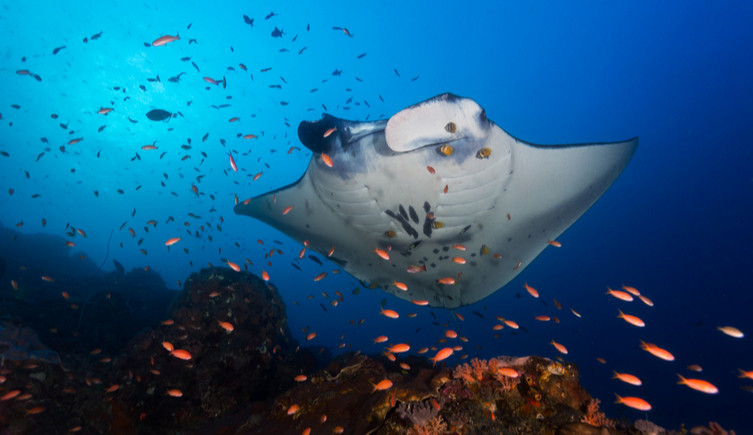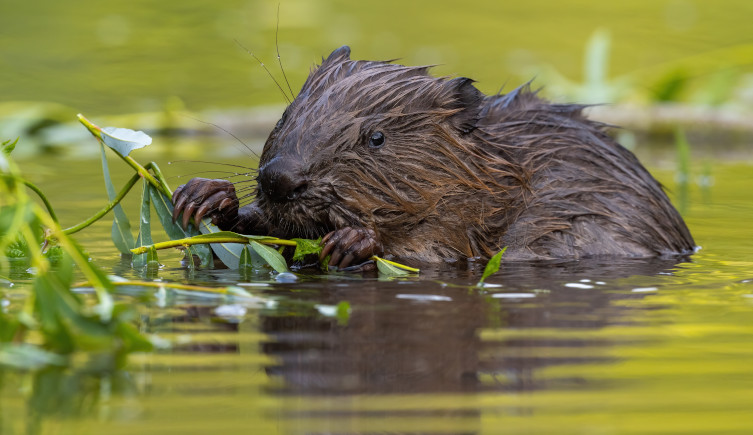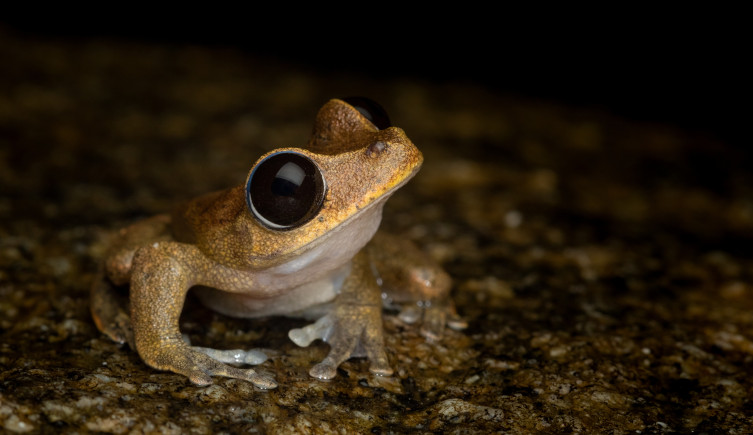As we head into 2023, we've been looking back at the wins for wildlife that have taken place over the past year.
Here are just 20 of the ways humanity's efforts to help nature paid dividends in 2022.

Fin whales were found in numbers not seen for at least a century in the Southern Ocean. Image © Juan Gracia/Shutterstock
As we head into 2023, we've been looking back at the wins for wildlife that have taken place over the past year.
Here are just 20 of the ways humanity's efforts to help nature paid dividends in 2022.
When it seems like a worrying time for nature, it's more important than ever to find the light amongst the darkness.
It was a landmark year for the natural world in 2022, with the COP15 biodiversity summit focusing attention on how we can better protect and restore the fragile biodiversity of our planet. Though the path to a greener world might seem bleak, there is plenty to celebrate, with some of the highlights summarised below.
Though 2022 may have brought some good news for nature, it's not a time to be complacent. For your New Year's Resolution, why not get out there and see how you can help?

The northern Haiti magnolia had not been seen in 97 years. Image © Eladio Fernandez/Haiti National Trust
A tortoise found in the Galápagos islands has been confirmed as belonging to a species lost for over 100 years.
DNA testing of Fernanda revealed that the female tortoise was from the species Chelonoidis phantasticus, which had been thought extinct. Last year also saw the possible discovery of a new species of Galápagos giant tortoise, but more work is needed to confirm its identity.
It may be extinct by name, but Gasteranthus extinctus is not extinct in nature.
Thought to have been wiped out by deforestation, new specimens of the plant were rediscovered in remaining patches of Ecuador's cloud forest. Due to scientific naming rules, however, the species' name will stay the same.
Conservationists are hoping that third time is the charm for a Critically Endangered hummingbird.
After being first described in 1946, the Santa Marta sabrewing disappeared until 2010, when it promptly vanished once more. The rediscovery of the bird in an unprotected area of Colombian forest is spurring efforts to conserve the habitat of this extremely rare bird.
A species of tree lost since 1925 has been found high in the mountains of Haiti.
Deforestation has destroyed most of the northern Haiti magnolia's habitat, but there are hopes that a nursery can be established to protect the future of the species.

Up to 30% of the world is to be protected for nature following the agreement of new biodiversity targets at COP15.
Other targets agreed as part of the Kunming-Montreal Global Biodiversity Framework include an increase in biodiversity funding, the reduction of the rate of extinction tenfold, and the elimination of $500 billion of subsidies harmful to biodiversity each year by 2030.
The era of commercial whaling in Iceland could be coming to an end, after the country's fisheries minister said there was 'little justification' for the practice.
Svandis Svavarsdottir said that the practice was becoming increasingly less profitable as demand for whale products falls. This sparked suggestions that the minister may not choose to renew whaling licenses in the country, which would leave Japan and Norway with the last remaining commercial whaling fleets.
The most comprehensive guide to the world's ecosystems has been published, providing new insights into how they can be restored.
The Global Typology of Ecosystems is designed to allow the comparison of similar ecosystems around the world, allowing successful conservation strategies to be more easily shared and implemented.
Tiger populations are as much as 40% higher than previously thought, following improvements in the way they are monitored.
Though the big cats remain Endangered, conservationists are hopeful that the expansion of protected areas will see their numbers continue to grow.

Giant manta rays are found around the world, mostly living in tropical waters adjacent to the equator. Image © Shutterstock/nicolasvoisin44
Bitterns, whose call can be as loud as a jet aeroplane taking off, now number in their hundreds in the UK after almost being wiped out twice in the twentieth century.
The restoration of reedbeds and a crackdown on egg collecting have helped the heron to spread across England, with the species reaching further north than has been recorded in living memory.
Endangered giant manta rays are thriving in the protected waters of Komodo National Park.
Researchers discovered that protecting the feeding and courtship grounds of the fish is helping them to bolster their population in the world heritage site, with over 1,000 individuals found during the latest count.
Fin whales have returned to their former feeding grounds in numbers not seen since the era of whaling.
As many as 150 of the whales, the second largest in the world, were spotted feeding around Elephant Island in the Southern Ocean. It has been interpreted as signs that fin whale populations are recovering, which could also help to lock up more carbon dioxide in the oceans.
Grey wolves, brown bears and white-tailed eagles are among the many colourful creatures whose populations are bouncing back to levels not seen in decades.
The European Wildlife Comeback report revealed that legal protections and reintroduction projects can help species successfully re-establish, provided they are given sufficient support.

The Eurasian beaver is one of 20 species that could have a significant impact on restoring the world's ecosystems, and was reintroduced into London in 2022. Image © WildMedia/Shutterstock
Just 20 large mammal species could be instrumental in undoing the damage done to the world's biodiversity.
New research revealed that species such as the wolf could help restore ecosystems in Europe, while the return of hippopotamus, cheetah and lion could double the area in which healthy mammal populations live in Africa.
After being hunted to extinction centuries ago, Eurasian beavers have returned to the UK's capital.
A pair of beavers released in Enfield follow in the footsteps of many others released across the UK, with reintroductions aiming to help restore biodiversity and mitigate flooding impacts.
A species of parrot made famous by the animated film Rio has been reintroduced to its forest home just three years after being declared extinct in the wild.
Eight Spix's macaw were released in June 2022, followed by another twelve in December. A further 40 macaws are set to be moved from a breeding centre in Germany to Brazil in the coming year so that they can bolster the restored population.
An unexpected arrival has set a milestone for rewilding in the UK.
A female European bison introduced into Kent woodland surprised conservationists when it gave birth to a young calf. The new arrival adds to the small herd, which is being monitored to see what impacts it has on the surrounding woodland.

The Australian lace-lid is one species which has been hit hard by chytridiomycosis. Image © Trent Townsend/Shutterstock
Fragments of DNA left drifting in the air by wild animals can be used to identify them from hundreds of metres away.
Two independent teams of researchers developed methods to sample environmental DNA (eDNA) in the air, which could be used by conservationists to find very rare species, or those that live in hard-to-reach areas.
There are less than 10 vaquita left in the world, but they can bounce back if given the chance.
A study of the genetics of the small porpoise found that if illegal gillnet fisheries can be removed from its home in the Gulf of California then the species is well-placed to recover from the edge of extinction.
The clue to stopping a deadly fungal disease which has wiped out more than 90 amphibian species may have been hiding in plain sight.
Australian researchers found that frogs with a greater diversity of bacteria on their skin were better at resisting chytridiomycosis, offering new solutions in the fight against the disease.
The origins of the enigmatic European eel have finally been revealed.
While researchers have suspected for a long time that the eels bred in the Sargasso Sea, it was only this year that satellite tags finally confirmed it. By knowing the location of the Critically Endangered species' breeding grounds, steps to protect the area can now be taken.

Biodiversity is connected to almost every aspect of our lives, but it needs our help. Small actions can make a big difference.
Don't miss a thing
Receive email updates about our news, science, exhibitions, events, products, services and fundraising activities. We may occasionally include third-party content from our corporate partners and other museums. We will not share your personal details with these third parties. You must be over the age of 13. Privacy notice.
Follow us on social media